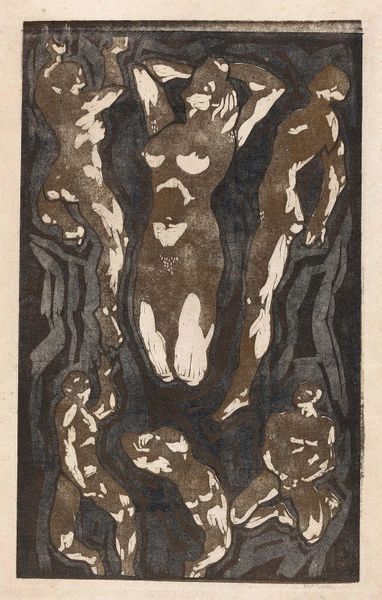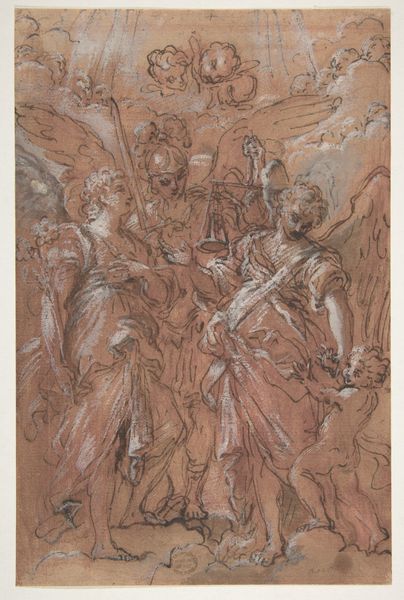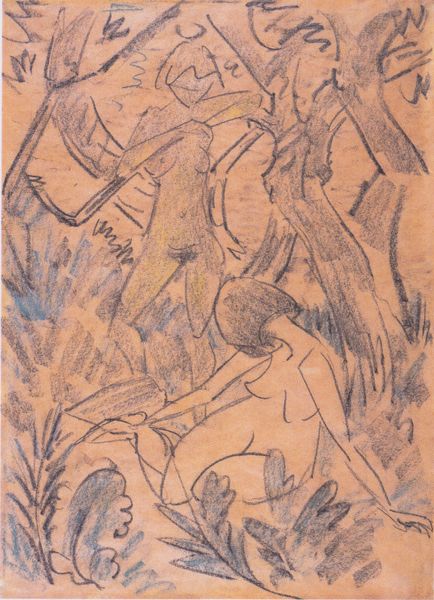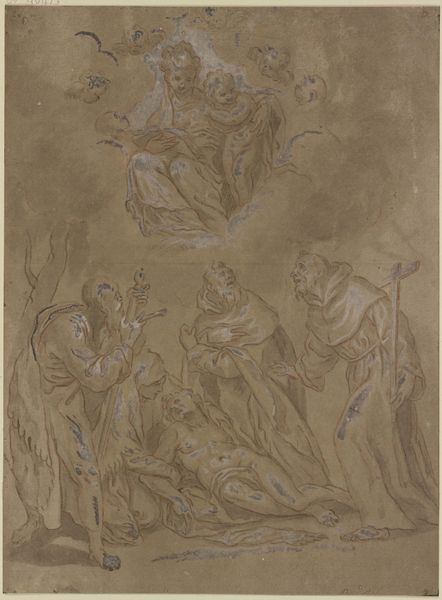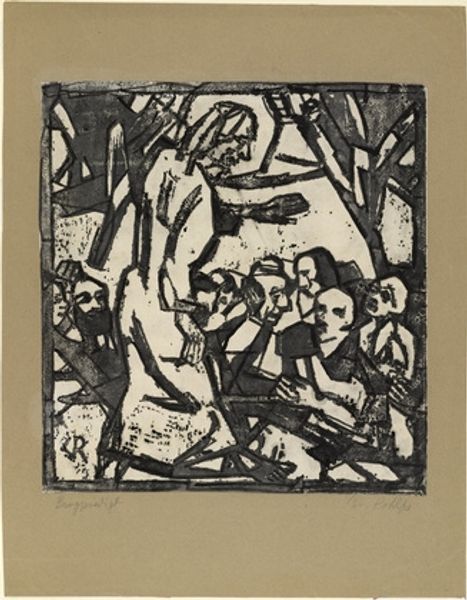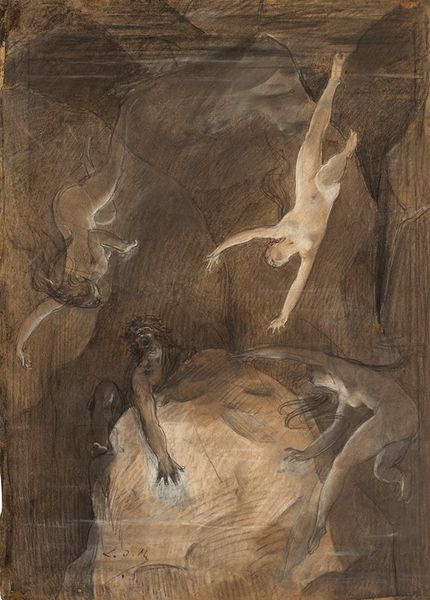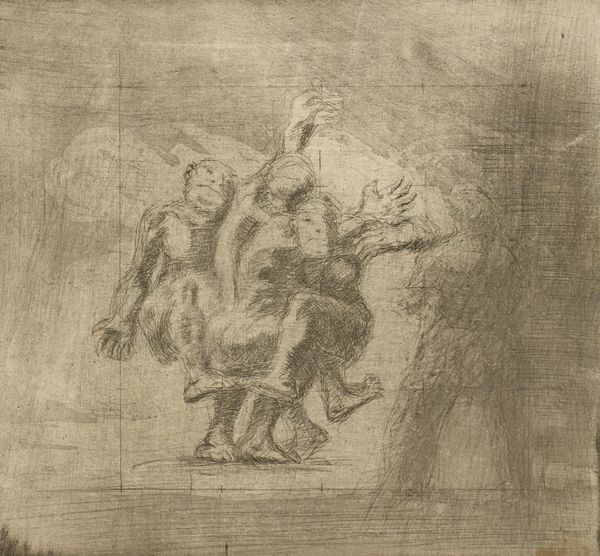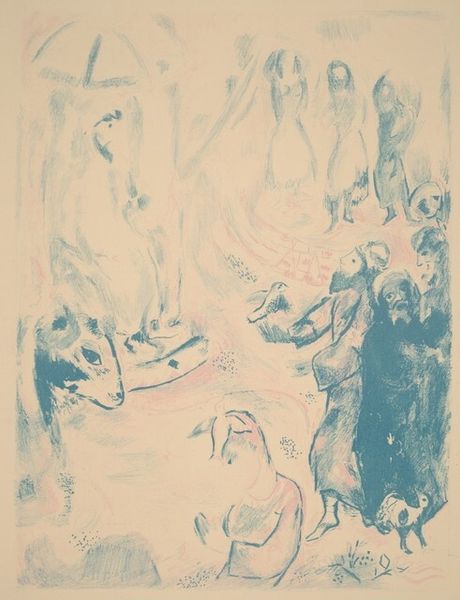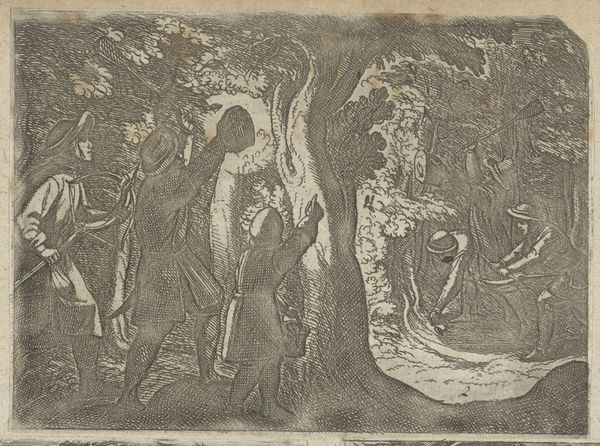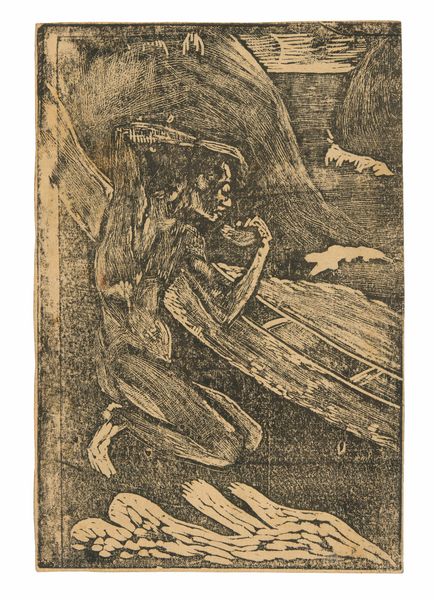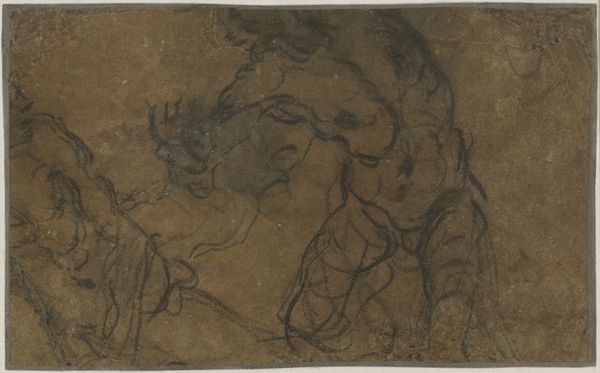
drawing, pen, charcoal
#
portrait
#
drawing
#
street-art
#
narrative-art
#
ink painting
#
figuration
#
group-portraits
#
expressionism
#
pen
#
watercolour illustration
#
charcoal
#
watercolor
Copyright: Public domain
Curator: Before us is "Le Metro Necro" created in 1903 by Théophile Alexandre Steinlen. The artwork, composed using pen, charcoal, and watercolor, pulls us into a narrative fraught with tension. Editor: It strikes me as a chaotic vortex. The grayscale palette adds to a somber and oppressive mood. I wonder what inspired such a vision. Curator: Steinlen, like many artists of his era, was deeply moved by social realities. The metro itself, while a symbol of modernity, perhaps carried anxieties about the changing urban landscape and its effects on the human psyche. The figures' upraised hands, the open mouths, suggest desperation or a silent scream. Notice how these motifs often symbolize suffering and pleading throughout art history. Editor: Yes, but let's not forget the physicality of it. Look at the media. The blend of pen strokes, rough charcoal smudges, and layered washes—it suggests the grime and frenetic energy of the metro itself, an apt use of process echoing content. Were these materials easily accessible or luxury items adding an ironic spin to the suffering it portrays? Curator: That's a fascinating consideration. Regardless of the cost, I would point out how Steinlen’s artistic choices underscore a deeper cultural narrative: a collective fear or disillusionment hidden within progress itself. Consider how the "Metro" becomes "Necro" – the iconography implying that modernity harbors its own forms of death, whether physical, spiritual, or societal. Editor: It's interesting you highlight this 'death', when to me the physical rendering conveys a strong message, too. The stark contrast between light and shadow enhances the overall dramatic effect. In addition to the choice of cheaper mediums potentially echoing the artwork's setting among poorer inhabitants. Curator: Absolutely, materiality provides context but is one element among many! Ultimately, this work acts as a visual lament, an exploration of existential uncertainty disguised in an everyday urban scene. Editor: It leaves me pondering on whether this artwork's materials and their application really succeed in highlighting such narratives on social inequalities during that time period, considering today's perception on consumption, materiality, and labor.
Comments
No comments
Be the first to comment and join the conversation on the ultimate creative platform.
